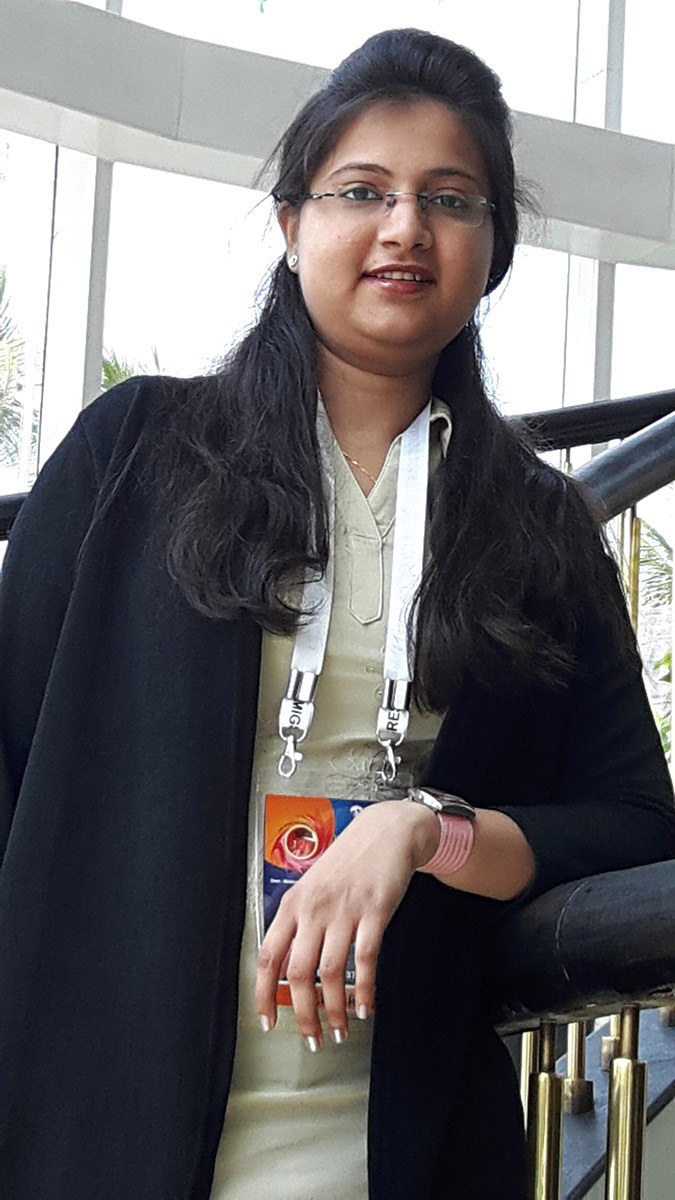For Patients
Medicine that deals with the care of women during pregnancy, childbirth, and the recuperative period following delivery.
Medicine that deals with the care of women especially the diagnosis and treatment of disorders affecting the female reproductive organs.
Video Laparoscopic Surgery (VLS), commonly practised all over the world today, involves smaller and safer incisions to be made for complex Gynaecological Surgeries. A small access (small wound: 1 cm) is made with the help of a rod shaped telescope attached to a camera & medical monitor so as to see the target organs. The diseased organ is visible under high magnification, which is examined & operated simultaneously with minimum trauma to the patient. The technique also enhances the precision and efficiency of doctors.
Laparoscopic surgeries have become very popular in short span of time, in fact they have replaced all traditional abdominal surgeries. Their popularity is due to the immense advantages they have got over traditional surgeries. The advantages and benefits to the patients are
- They are less pain
- Patient recovers very fast (24-48 hrs.) and can resume to work within few days.
- No post operative rest required
- No scars on the abdomen
- Less chances of wound infection
- No chances of post operative hernias and adhesions
- Apart from these benefits, patients also will have immense long term benefits.
In Laparoscopic surgery enough advancement has taken place for the last 5-10 years. In the years to come many more advancements can be expected for the benefits of the common man.
Gynecologists are pioneers in this field by starting Laparoscopic Tubal Ligation operations in 1950s and then what was once diagnostic procedure became completely therapeutic procedure from 90's onwards. Today with breakthrough in technology, we are able to perform almost all Gynecological surgeries including cancer surgeries through Laparoscopic approach.
After Laparoscope is attached to the Endoscopic camera, the target organ's picture is visible on the monitor. Normal and diseased organs can also be seen on the monitor. Two lateral ports (0.5 cm incision) are placed on the abdomen and instruments are passed through them. Throughout this procedure, the organ is examined & operated simultaneously, with minimum trauma to the patient.
One should opt for a laparoscopic surgery when one wants more reliability, more safety, less pain and quick recovery. Traditional Gynaecological surgeries such as Infertility treatment, Fibroid, Ovarian cysts, Ectopic Pregnancy, Endometriosis & Chocolate Cyst, Septet uterus, Tubal Ligation and Recanalisation, Vaginoplasty, Prolapse & Stress Urinary incontinence Surgery, Excessive menstrual bleeding, Scanty menstrual bleeding, Tubal block, Removal of uterus etc. that were done by open (laparotomy) method, can now be carried out effectively and safely by Laparoscopic surgery.
Is Laparoscopy too expensive for Indian patients?
No, the charges are comparable to the traditional method. The surgery has its own unique advantages:
- Recorded video of Gynaec Endoscopic surgery shows the quality of surgical skill and also helps in teaching and learning purpose.
- It also helps in deciding the future treatment protocol by different consultants after an Endoscopic surgery in infertility patient
- Recorded video of laparoscopic suturing helps in assuring scar integrity during subsequent pregnancy in a patient following a fibroid surgery
- In the event of post-operative complications it helps in medico–legal protection in the court of law.
- Recorded video of Ectopic pregnancy helps in conveying the condition of the affected tube.
Other advantages of Video-Laparoscopy are:
The patient is discharged on the same day of the surgery (shorter hospitalisation). Rapid convalescence (faster return to normal activity) helps in getting back to routine work within 2-3 days. The medication required is less. The possibility of post-operative adhesion formation will be less, and the possibility of pain because of post-operative adhesions will also be less.
Advantages of Laparoscopy when compared to the 'open traditional method'
Faster recovery helps the patient to resume with her routine activity within 2-3 days after operation, as against the 15-30 days recovery for the traditional (Open) method.
- Less adhesions after fibroid or chocolate cyst.
- Less cuts, less pain, quicker relief & recovery.
Our Jyoti Hospital & Minimum Invasive Surgery Cetre, Bavishi Endoscopy Centre and Apollo hospital-Ahmedabad have state-of-the- art facilities that meet international standards. In most of the developed countries Et-CO2 monitoring is mandatory during the surgery, as CO2 is used for insufflation during Laparoscopic surgery, which is not routinely practiced in our country.
Yes. At present almost in every specialty like Gastro-enterology, Urology, ENT, Neurology, and Arthroscopy this technique is used. Robotic & Telesurgery is also going to be a reality very soon in our country.
As surgical skills can be judged from the recorded video of Laparoscopic Surgery (Live Operative File), and can be compared with western Laparoscopic Surgeon, India is on its way to becoming the most favoured health destination and especially a popular one for laparoscopic surgery. Robotic Laparoscopic Surgeries and Tele Laparoscopic surgeries are going to become popular in future.
No, If Laparoscopic Surgeon is experienced in avoiding complications, and managing them timely and correctly. So in first 500 Laparoscopic surgeries, during learning curve and if he or she is not trained well may experience few complications.
Experience & Exposure of the Endoscopic Surgeon for different Endoscopic Surgeries.
Safety monitoring during Laparoscopic Surgery like Multipara Monitoring including EtCo2 and Glycine deficit (less than 1.5 liter)/ S.Na level (Normal is 135 mEq/L) during Hysteroscopic Surgery.
Live oprative file (Video/CD/DVD) of the operation must be kept with you for future reference.
Selection criterias & optimum councelling before operation from the right person to understand the advantages and limitations of Endoscopy surgery.

